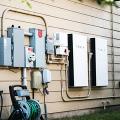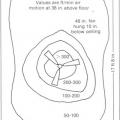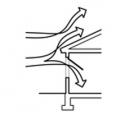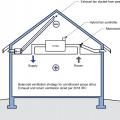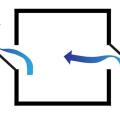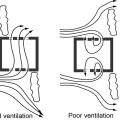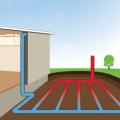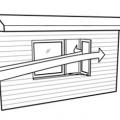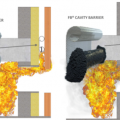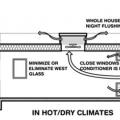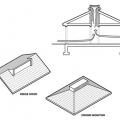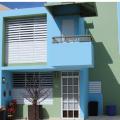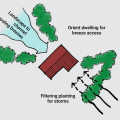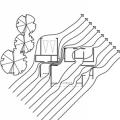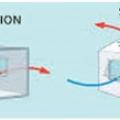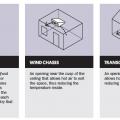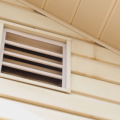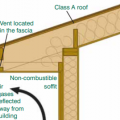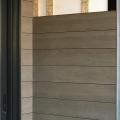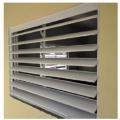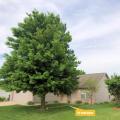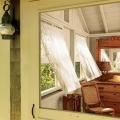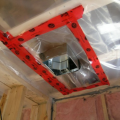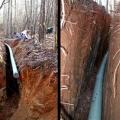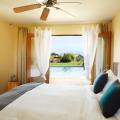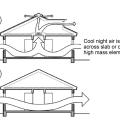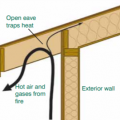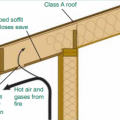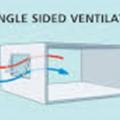Showing results 1 - 43 of 43
A battery storage system can provide reliable back-up power during a grid power outage
A Corsi-Rosenthal Box is a highly effective DIY air cleaner made of easy to obtain materials such as HVAC filters, a box fan, cardboard, and tape
A mini-split air-conditioning system can be a highly effective low-energy approach to provide cooling to one designated zone in the house
A shallow, open floor plan allows free flow of cross ventilation through the house
Air speeds generated by a typical ceiling fan are in the ideal range for providing occupant cooling without causing disruption
Airflow can be directed across thermal mass in the ceiling, floor, or elsewhere inside the home through various window and louver configurations
Casement windows or wing walls can create zones of higher pressure (right) and lower pressure (left) to encourage cross ventilation when wind is flowing parallel to window openings
Comfort ventilation focuses on airflow over occupants; in this example of wind-driven cross ventilation, the air is directed through the main occupied areas of the bedroom
Dense hedges can encourage cross ventilation (left image) or not (right image) depending on how they are placed relative to windows
Earth tubes buried in the ground can provide pre-cooling of ventilation air or primary cooling if designed deep and long enough
Even when wind is blowing parallel to a wall, an open casement window can create a zone of higher pressure near the window opening, driving airflow into the house
Fire barriers for ventilated wall cavities use thermally activated expansive materials to close off the ventilation space between the wall cladding and the sheathing during a fire while allowing air flow through the metal mesh during normal conditions
Having both low and high ventilation openings is necessary to promote airflow from the stack effect
In hot, dry climates, passive cooling should focus on shading, night flush through cross ventilation and whole-house fans, potentially using high-mass construction
Inducing airflow through the stack effect requires low inlets and high outlets such as a ridge hood or crown monitor
Jalousie windows use shutters rather than glass over the window openings to allow for maximum ventilation. Screens may be installed to keep out insects.
Landscape trees and shrubs to funnel cooling breeze towards a home in hot climate zones.
Locating windows on adjacent and opposite sides of the house will allow cross ventilation regardless of wind direction
Natural ventilation can be wind-driven (cross ventilation) or buoyancy-driven (stack ventilation)
Passive cooling techniques can reduce or eliminate the use of air conditioning and can be used for backup cooling during emergencies.
Provide flashing and sealing integrated with the air and water control layers for vents and other roof penetrations
Right - Provide passive ventilation in hot climates by installing wind chases and vents.
Right – A non-combustible 1/8-inch mesh screen is installed on vent openings to reduce the risk of ember intrusion.
Right – In wildfire prone areas, using a flat soffit with venting on the fascia instead of an angled soffit with down-facing venting reduces the risk of catching rising embers.
Right – Ripped OSB provides furring strips for a ventilation gap behind the wood siding.
Right – This aluminum jalousie window provides solar control while allowing view and ventilation.
Shade trees planted on the east or west sides of a house are one of the most effective measures that can be taken to reduce heat gains
The operable windows in this house are located at occupant level to provide comfort ventilation.
The polyethylene ceiling vapor barrier is sealed to form an air barrier around the exhaust fan in this very cold climate location (≥ CZ 6).
This experimental earth tube is 220 ft long, 8 inches in diameter, and is buried 10 feet deep
This experimental radiative/evaporative hybrid cooling system uses water to reject heat at night through radiation and evaporation
This room has several passive and low-energy cooling features including a ceiling fan, fully operable French doors, window shading, an outdoor water feature, and light-colored hard-scaping.
Whole-house fans or wind-driven cross ventilation can be used to draw air across thermal mass for a night flush strategy
Wrong - An open eave with no soffit covering can trap rising hot air and embers from a wildfire.
Wrong - If the soffit is applied directly to the rafter eave, it forms a sloping soffit, which creates a pocket that can trap hot air and embers from a wildfire.
Wrong – Airborne embers can float into holes in damaged vent screens and ignite flammable items in the house or accumulated debris in the vent.
Wrong – The open overhang with exposed timbers and unscreened vent holes make this roof more susceptible to ignition.
Wrong: Single sided ventilation without at least two windows, wing walls, and predictable wind directions is ineffective for generating wind-driven crossflow.
